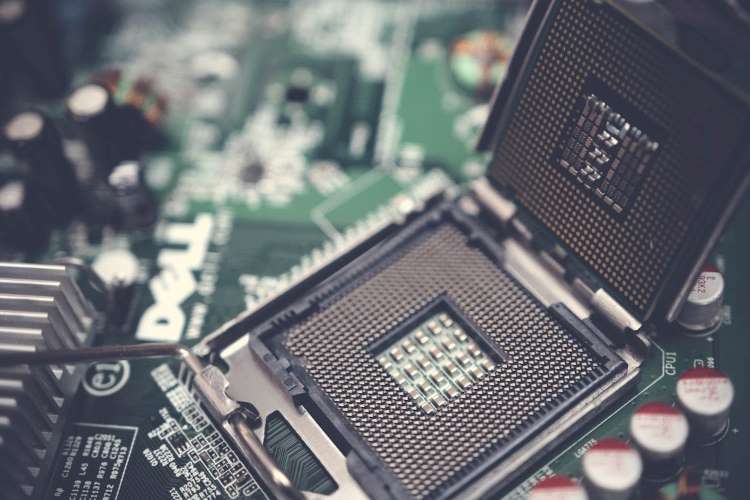
India’s ambition to become a global semiconductor manufacturing hub has gained momentum, with the government finalising timelines for projects under its ambitious Rs 76,000 crore Semicon India initiative. As the world grapples with supply chain disruptions, India’s strategic push for self-reliance in semiconductor production is vital for its technological sovereignty. Yet, it needs to overcome several hurdles before realising this dream.
The first signs of India’s progress are visible. Micron’s $2.7 billion chip testing and packaging facility in Sanand, Gujarat, is slated to roll out its first Made in India chips by mid-2025. This marks a milestone for the country as it steps into large-scale semiconductor production. Tata Electronics, another key player, is investing Rs 91,000 crore to establish India’s first semiconductor fabrication facility in Dholera, Gujarat. Its assembly, testing, marking, and packaging (ATMP) plant in Assam is expected to start production by the end of 2024.
READ I Gender parity: India must reimagine NariShakti policies
Major semiconductor projects
Other projects such as Kaynes Technology’s ATMP plant and CG Power’s testing facility in Sanand are testimony to the government’s commitment to nurture domestic semiconductor manufacturing. However, while these projects signal progress, they also reveal the extensive timeframes required for full-scale commercial production. India’s semiconductor ambition is a long-term play, with many plants still years away from becoming operational.
The global semiconductor industry is expected to hit the trillion-dollar mark by 2030, driven by rapid advancements in electronics, artificial intelligence, and autonomous systems. For India, this presents a unique opportunity to position itself as a critical player in global supply chains. Taiwan’s dominance in chip production, coupled with geopolitical tensions and supply chain vulnerabilities, has prompted many countries to seek diversification.
India’s value proposition in this landscape is compelling. Prime Minister Narendra Modi’s address at SEMICON India 2024 projected the country’s skilled workforce and investment-friendly environment. India’s emphasis on democratic values and resilient supply chains positions it as an attractive destination for semiconductor investments.
Challenges: Power, water, and talent
However, India’s journey into semiconductor manufacturing comes with significant challenges. The capital-intensive nature of the industry, the need for cutting-edge technology, and the complexities of fabrication are daunting. Setting up a fabrication plant requires billions of dollars, sustained investment, and highly skilled labour, factors that India is still grappling with.
Chip manufacturing is notoriously resource-intensive. It requires uninterrupted power supply, vast quantities of clean water, and sophisticated water purification facilities. These are significant hurdles for India, particularly in regions where infrastructure may not be robust enough to support these requirements. The challenge of ensuring continuous high-quality water supply for fabrication facilities cannot be underestimated, and failure to address this could stall progress.
Moreover, the success of India’s semiconductor ecosystem depends heavily on developing a highly skilled workforce. India already houses 20% of the world’s chip design talent, but manufacturing demands a different set of skills. The government has taken steps to address this through initiatives like the Chips to Startup programme, which seeks to train young engineers and establish Centres of Excellence at premier institutions. These programmes are crucial in building the next generation of semiconductor experts who will drive innovation and ensure smooth plant operations.
Investment and regulatory hurdles
Despite significant incentives under the Semicon India programme — covering up to 50% of project costs — there are concerns about the long-term sustainability of such support. Reports suggest the government is planning to reduce the incentives for ATMP projects to 20-25% in future phases. While this reflects the growing momentum in the sector, it also raises questions about the sufficiency of fiscal support for new entrants.
Additionally, securing the right technology partnerships remains critical. The semiconductor industry thrives on innovation, and transferring production-grade technology from established global players is essential for India’s success. India’s strategic partnerships, such as those with Micron and Foxconn (until Foxconn’s recent withdrawal from its joint venture with Vedanta), will play a pivotal role in accelerating the adoption of advanced technologies.
Geopolitical considerations and partnerships
India’s semiconductor push cannot be viewed in isolation from the global geopolitical landscape. The semiconductor industry is deeply intertwined with global supply chains, and disruptions — whether due to natural disasters, pandemics, or geopolitical tensions — can have far-reaching consequences. Taiwan’s dominance in the sector, coupled with its tensions with China, underscores the need for countries like India to develop alternative supply chains.
India’s partnerships with the US, Japan, and other advanced economies are crucial in this regard. Collaboration on research, technology transfer, and the development of resilient supply chains will be essential to ensuring India’s long-term success in this space.
India’s quest for semiconductor self-reliance is a long-term project requiring persistence, investment, and strong policy support. The current progress, with key projects expected to come online within the next few years, is promising. However, challenges such as capital requirements, infrastructure development, and the nurturing of a skilled workforce must be addressed head-on.
India’s semiconductor strategy must build on its strengths — its vast talent pool, favourable investment environment, and strong policy support — while addressing the structural challenges that stand in the way of large-scale commercial production. The government’s commitment to fostering innovation, supporting infrastructure development, and providing fiscal incentives will be key to ensuring India’s success in this highly competitive industry.
As the global semiconductor industry grows, India has a unique opportunity to position itself as a critical player. With the right investments, partnerships, and policy support, India can turn its semiconductor ambitions into reality, becoming a global hub for semiconductor manufacturing by the end of this decade.
